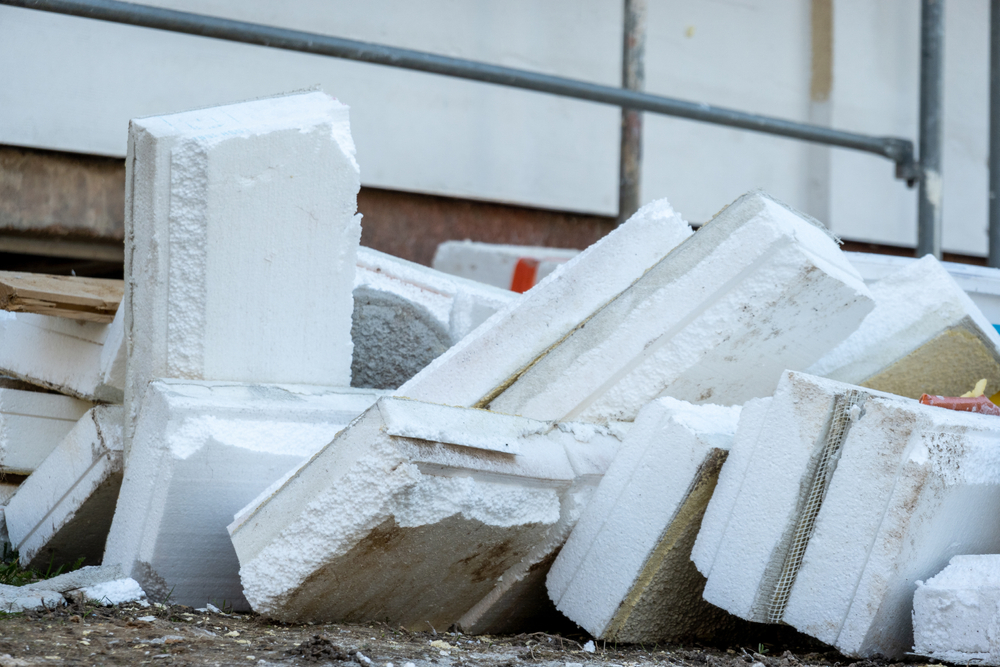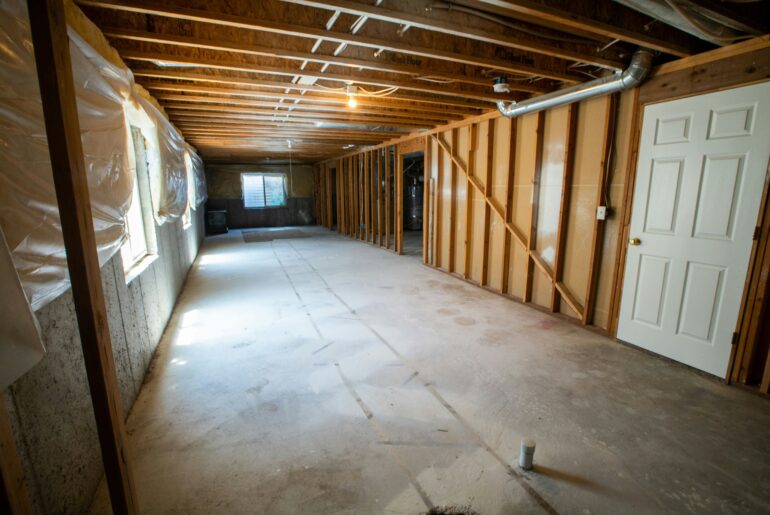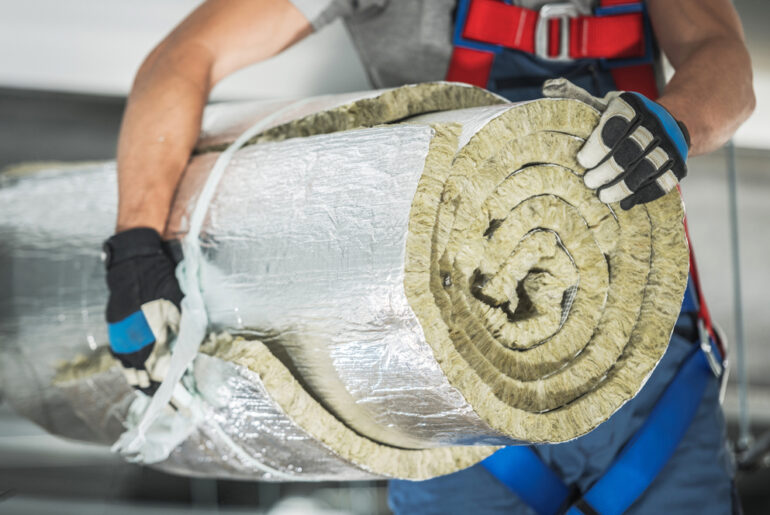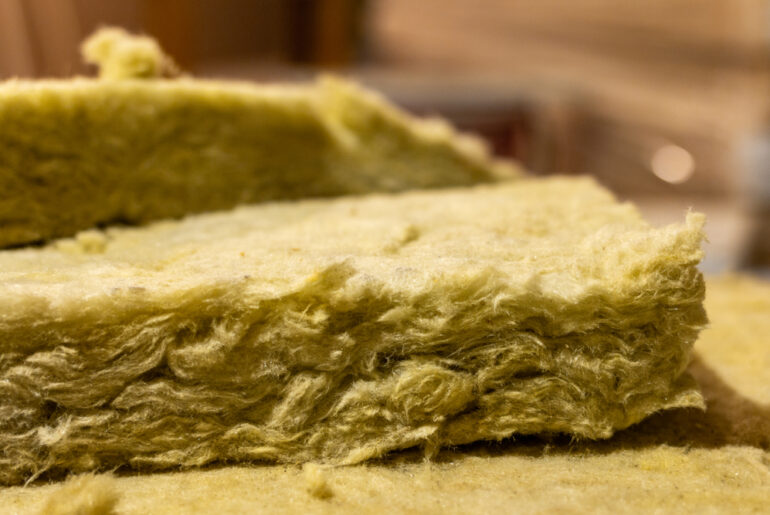There are often two reasons why they want to recycle their home’s insulation: saving money or saving the environment.
If you’ve already paid for insulation, it makes sense that you’d prefer to reuse the material as much as you can. Doing so will help you save money, thus offsetting the cost of installing new insulation in your home.
With the rise of eco-friendly home improvement options available today, it’s always a good idea to seek additional strategies to reduce the impact of discarding home insulation on the environment. Reusing existing insulation in the home reduces the need for purchasing new insulation. Recycling reduces the amount of insulation that winds up in a landfill and cuts down on the number of pollutants released as byproducts during the manufacturing process.
What Insulation Can Be Recycled?
For residential properties, there are five primary types of insulation: fiberglass, foam, cellulose, denim, mineral wool, and natural fibers. Each type of insulation has various qualities, traits, and applications.
All insulation types, except for cellulose and foam, can be recycled. The most easily recycled insulations are mineral wool insulation, denim, and natural fibers. Although fiberglass may be recycled, few recycling businesses do so.
To Recycle or Not to Recycle…That Is the Question
In almost all circumstances, insulation cannot be left by the side of the road. You must take it to an insulation-specific recycling facility if it is recyclable. If not taken care of properly, you risk some sizable fines for tossing it in with the rest of your household trash.
Working with professionals is often more beneficial if you want to remove and recycle insulation. Handling insulation can be detrimental to your health if you do not have the proper protective gear when removing it. Plus, a professional will be better equipped to get the insulation to an appropriate recycling center.
However, if you plan on doing it all yourself, here is what you need to know about reusing and recycling each insulation type.
Cellulose
Luckily, you have already received an A on your environmental report card for choosing to use cellulose insulation in the first place! Cellulose insulation is constructed from recycled materials. The standard composition of cellulose insulation is 20% non-toxic fire retardant compounds and 80% recycled newsprint. Additionally, cellulose insulation production uses less energy than the majority of other types of insulation.
Unfortunately, cellulose insulation cannot be recycled because it is treated with fire-retardant components. Therefore, cellulose is virtually always environmentally friendly, but there is one drawback: it cannot be recycled. However, as was already said, cellulose insulation can be reused.
The good news is that cellulose insulation can be reused. Assuming that it hasn’t received any water damage or pest infestations. You can bag up your cellulose insulation for reuse. It will require a truck set up with a powerful vacuum — the type used to install loose-fill insulation. The output will need to be reconfigured so that it can vacuum up the cellulose into fill bags instead of blowing the fibers out. Once the cellulose has been collected, it can be reused to insulate another space.
Fiberglass
Similar to cellulose insulation, fiberglass insulation is frequently created from recycled materials — namely recycled glass — however, the percentage of recycled materials tends to be quite a bit lower in fiberglass than in cellulose.
Fiberglass insulation has the nifty feature of frequently being put in batts, which makes removal simpler. It is still best that you hire professionals who have specific experience in reusing insulation materials if you intend to reuse fiberglass insulation. Fiberglass can be very irritating to eyes, skin, and lungs if handled without the proper protective gear. A professional will come prepared with PPE and save you from irritation.
You need to ensure that your fiberglass is in a state that can be reused. It should be free from moisture and pest infestations. Moisture encourages the growth of germs and mold and reduces the material’s capacity to perform its intended function.
Additionally, you want to confirm that the insulation hasn’t been badly crushed or matted down. If so, the old material might not be able to provide enough R-value to adequately insulate your space.
When it comes to recycling, fiberglass can technically be recycled. However, only a small number of American counties currently accept fiberglass insulation for recycling, and they may have very specific requirements for what is and isn’t allowed.
Mineral Wool
Insulation made of mineral wool is good for both recycling and reuse. Depending on the kind of mineral wool used, it might also be predominantly constructed of recycled materials as well.
If there are no moisture or pest problems, mineral wool can be reused over and over again to keep your home insulated.
You’ll probably discover that mineral wool insulation is accepted by a lot more recycling facilities than fiberglass insulation. But it is still not a guarantee that your local spot with accept mineral wool.
Polyurethane Foam
Because it contains petroleum and the carcinogenic chemical benzene, expanded polystyrene (EPS) is typically rejected by landfills and household recycling programs. However, there are a number of techniques to prevent the foam insulation from being mishandled or thrown out needlessly.
To prevent the foam insulation from ending up in a landfill, find another use for it. For instance, you might insulate a barn, shed, or doghouse outside. You might be able to get anything in return if you barter or exchange the foam insulation with someone who wants to use it to insulate her own building.
Find a recycling facility nearby that will accept the insulation to turn it into a different product or sell it as a recycled product to other homeowners or construction companies seeking to recycle building materials. There aren’t recycling facilities in every state, however.
Should you find a place that does recycle it, you should use caution when transporting the foam insulation to the facility. Putting polyurethane foam inside a plastic trash bag creates a significant risk of fire. The best option is to either hire a professional to remove and recycle the insulation for you or contact the waste management center and ask for their procedure for accepting polyurethane foam for recycling or disposal.
Hemp
Hemp is a very green insulation option. If grown sustainably, it is a renewable resource that improves soil and nurtures a variety of earthly life. Its long lifespan and resilient performance enable it to be used in a variety of building systems. Batts formed from the inner fiber layer of the hemp plant are used as insulation. Since hemp is such a strong and long-lasting material, it can last the entire life of the structure and may never need to be removed!
If you do need to remove your hemp insulation, you can compost it or recycle it. Hemp can even be used as a weed barrier or vegetation barrier in your garden or yard, where it will ultimately decompose and provide plant fertilizer.
Denim Insulation
Denim insulation is made from cotton, recycled jeans, and post-industrial denim. To make the cloth flame retardant, as well as insect, pest, and mildew resistant, it is shredded and given a boric acid treatment.
Denim can be both reused and recycled. Plus, it is biodegradable and can be composted in most cases. Bringing this kind of insulation to your neighborhood recycling facility is one of the most popular ways to recycle it.
Denim insulation can be utilized in a variety of applications because it is constructed entirely of cotton, a plant-based fiber. For your yard’s trees or plants, for instance, you can utilize compost. Alternatively, you may donate the used insulation to a nearby plant nursery so they can use it.
Can You Throw Away Insulation?
No, you can not simply throw away insulation. Removal and disposal of insulation require expertise. Most of the time, the typical homeowner is unable of handling this work well. Industrial vacuum equipment is necessary for thorough removal and secure disposal of some types of insulation, and you’ll still need a way of storing and moving the used insulation. Shortcuts with the disposal process are not appropriate because, oftentimes, there are health or safety risks involved.
The majority of local governments in the nation have stringent rules for recycling and insulation waste disposal. With regard to dangerous or difficult materials, the regulations are, in fact, even stricter. For instance, it is necessary to dispose of outdated fiberglass batt insulation and other insulation products in a specific manner. Furthermore, previous insulation might have contained vermiculite, which might have contained asbestos fibers; the disposal of this material is regulated and is best handled by qualified individuals.





